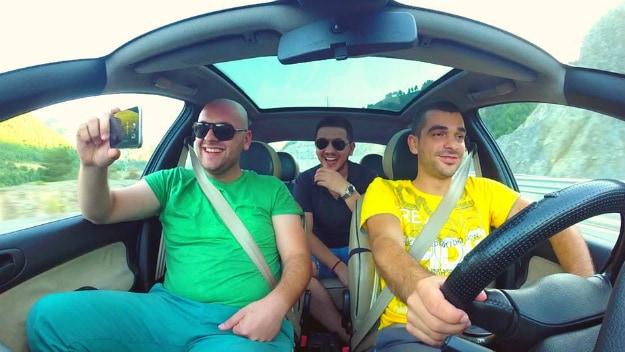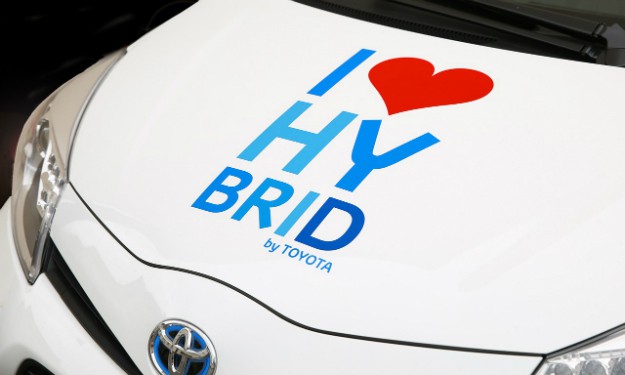Want to know the greenest ways to get around? Learn how your commute impacts your carbon footprint, and seek the greenest solutions for going out and about.
The Greenest Ways To Get Around
With the population growing, the number of people who need to go to work, school, and other places also increases. And with the technology now, you don't have to walk miles and miles to get where you have to be. All you have to do is hop in your car and drive to your destination. But did you know that transportation releases 30% of the greenhouse gases in the United States alone? If you really care for Mother Earth, you should start going green with how you get around. Luckily, here are a few tips on how you can do a greenest ways from Dailyinfographic:

The Greenest Ways To Get Around: How Your Commute Impacts Your Carbon Footprint
- Close to 30% of the greenhouse gases released in the United States come from transportation.
- Each gallon of gasoline burned in an average car's engine blows 19.4 lbs. of CO2 out of the exhaust and directly into Earth's atmosphere.
The Average American Commuter
- 86% of all workers over the age of 16 drive a car, truck or van to work; 76% of these workers drive alone.
- The average fuel economy of U.S. cars is 24.6 miles per gallon.
- The average commuting distance is 13.9 miles for a single-occupant vehicle: 13.9 x 2 times/day x 260 business days = 7, 228 miles traveled to and from work in a year. Which means that most commuters in the U.S. have a total carbon footprint of 6,214 lbs. of CO2 per year for gasoline users.
- Alternative Fuel's Impact on the carbon footprint of an average commute:
- BioDiesel: 5728 lbs CO2/year
- All electric: 14,752 lbs of CO2/year
- Compressed natural gas: 4,627 lbs of CO2/year
- Ethanol: 931 lbs of CO2/year
- Diesel: 7,162 lbs of CO2/year
Stop Being an S.O.V. (Single Occupant Vehicle)
What you can do:
1. Carpooling

- 10% of American workers carpool.
- The average distance for carpooling is 12.9 miles.
- Carbon footprint: Divide your footprint by the number of people you share a ride with.
2. Public Transportation

- 5% of American workers use public transportation to get to work.
- The average distance of public transit is 13.3 miles.
- 37 million metric tons of CO2 are saved daily with US Public Transportation.
- One person's switch to Public Transportation can reduce their footprint up to 4800 lbs. of CO2 a year.
3. Bicycling

- Less than 1% of American workers bicycle to work.
- The average bicycle trip to work 3.6 miles.
- Carbon footprint: One-time fee – carbon footprint of the manufacture of a bicycle: 530 lbs. of CO2 (according to one manufacturer)
4. Walking

- 3% of Americans walk to work
- Carbon footprint: ∞ miles
- The average walk to work is 1.2 miles.
5. Working from Home

- 4.6% of Americans work from home.
Transportation By City

Metropolitan Areas With The Most Public Transportation Usage:
- New York / Northern New Jersey / Long Island, NY / NY / PA ……. 30.5%
- San Francisco / Oakland / Fremont, CA …………………………………….. 14.6%
- Washington / Arlington / Alexandria / DC / VA / MD/ WV …………. 14.1%
- Boston / Cambridge / Quincy, MA / NH …………………………………….. 8.4%
- Philadelphia-Camden / Wilmington, PA / NJ / DE / MD …………….. 6.3%
Top 5 Metro Areas For Commutes By Bicycle:
- Eugene-Springfield, OR – 6%
- Fort Collins-Loveland, CO – 5.6%
- Boulder, CO – 5.4%
- Missoula, MT – 5%
- Corvallis, OR – 3.9%
Top 5 Metro Areas For Walking To Work:
- Ithaca, NY – 15.1%
- Corvallis, OR – 11.2%
- Ames, IA – 10.4%
- Champaign-Urbana, IL – 9%
- Manhattan, KS – 8.5%
Hybrid Cars

Hybrids are your best bet for a lower carbon footprint vehicle for now.
According to President of Toyota Motor North America, Inc., Yoshi Inaba, compared to the average car since the year 2000, our Prius has saved an estimated:
- 1.1 Billion gallons of gas
- 16 million tons of CO2
- And $2.9 Billion in fuel costs
As we move towards renewable energy production in the U.S., the carbon footprint of an electric car will be smaller than hybrids.
So are you going to start going green with your transportation preference? Let us know in the comments section below!
Up Next: The Agricultural & Water Conservation Conversation
Follow us on Facebook, Instagram, Pinterest, and Twitter!
Editor’s Note – This post was originally published on February 2016 and has been updated for quality and relevancy.


So many lies, so little time to spread them.